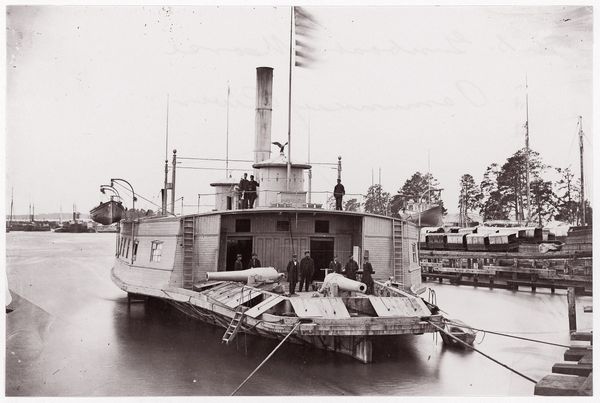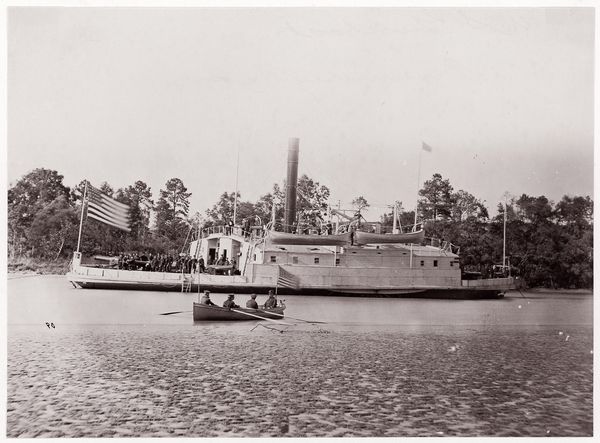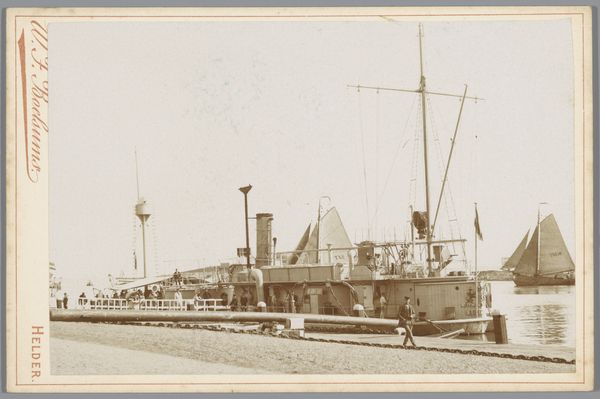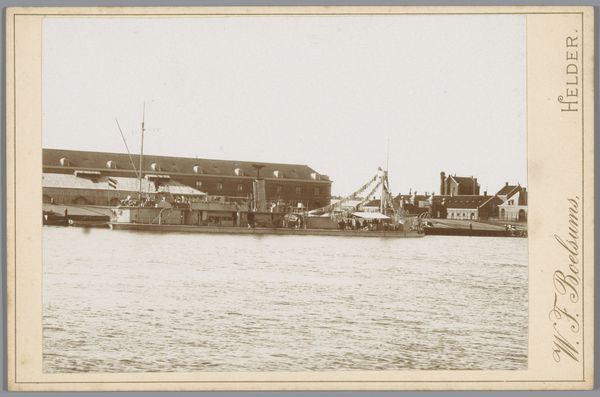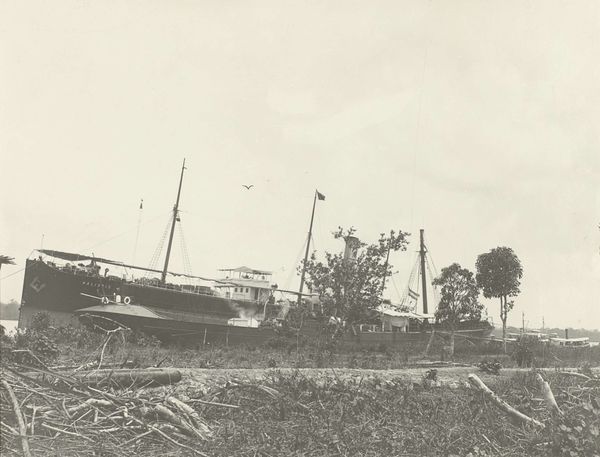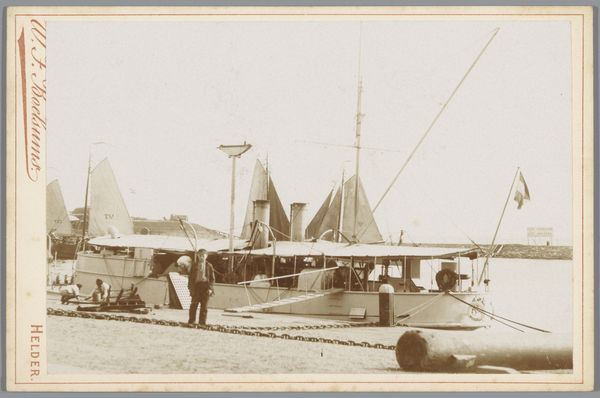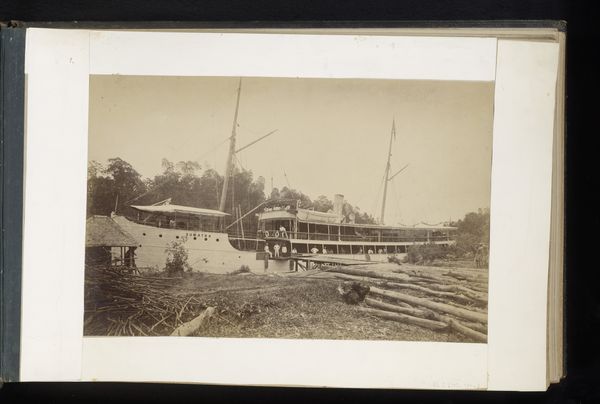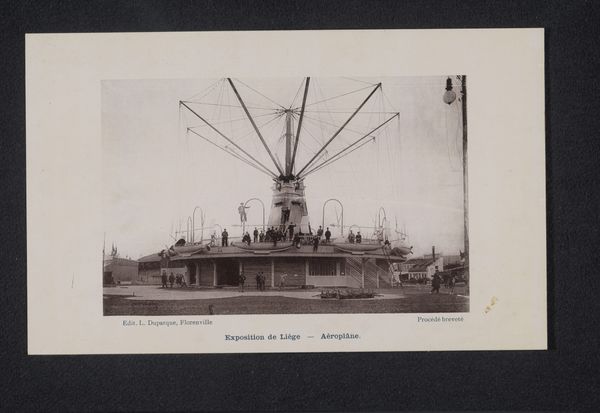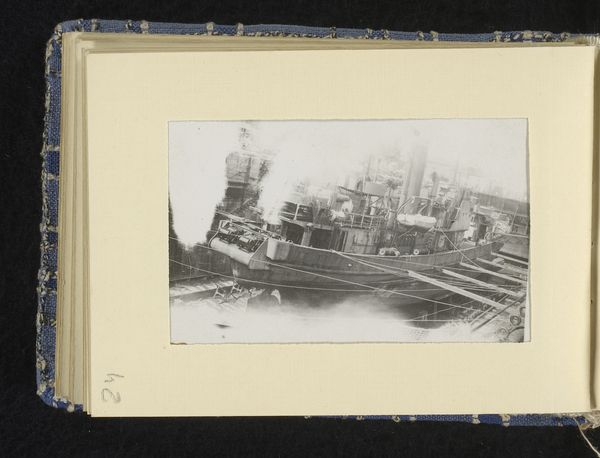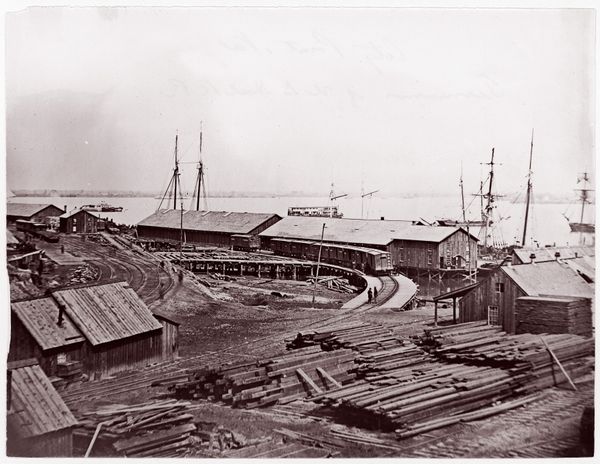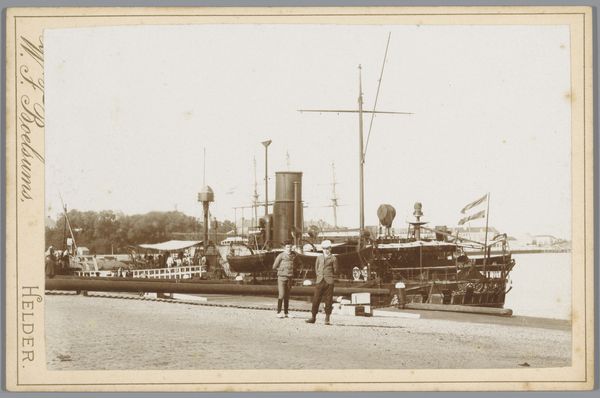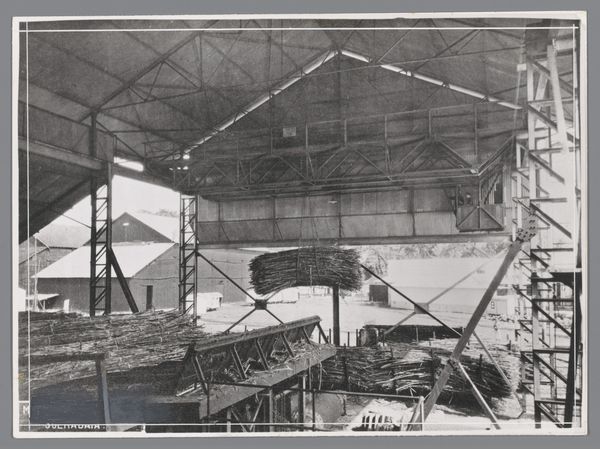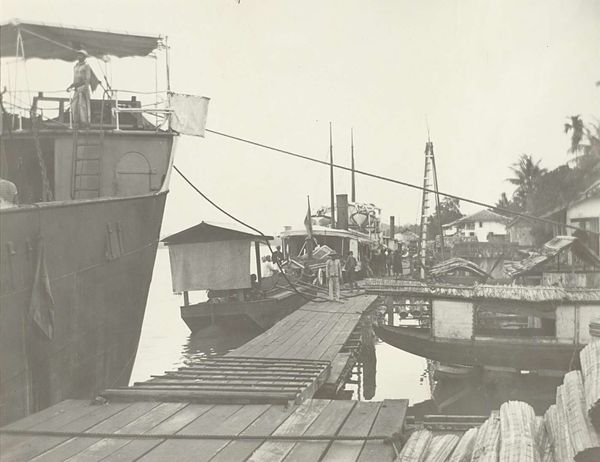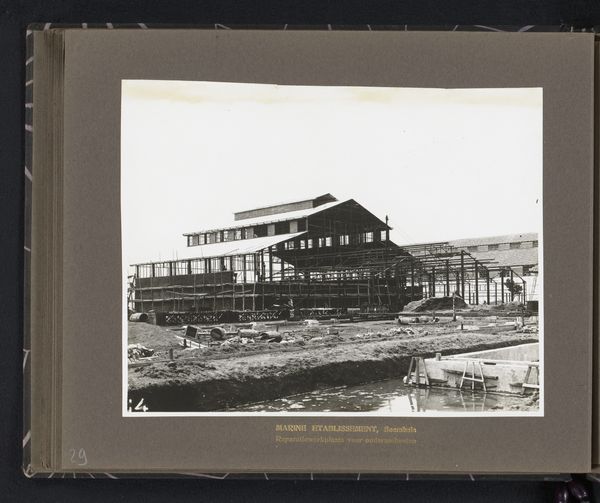
Stoomschip de Dandie van Paul Sandel bij de eerste vaart, Sumatra 1905 1905
0:00
0:00
#
paper non-digital material
#
flat design on paper
#
studio lighting mockup
#
personal journal design
#
book mockup
#
magazine mockup
#
publication mockup
#
paper medium
#
mockup template
#
publication design
Dimensions: height 141 mm, width 201 mm
Copyright: Rijks Museum: Open Domain
Editor: Here we have “Stoomschip de Dandie van Paul Sandel bij de eerste vaart, Sumatra 1905,” or "The Steamboat Dandie of Paul Sandel on its maiden voyage, Sumatra 1905." It’s a photograph from 1905. The thing that strikes me most is the ordinariness of it. What story do you think it tells? Curator: It's compelling because on the surface, as you say, it appears ordinary, almost documentary. However, look closer. Sumatra in 1905 was under Dutch colonial rule. This steamboat wasn't just transporting goods or people; it represented a system of power, exploitation, and resource extraction. Who do you think benefited most from this “maiden voyage”? Editor: The colonizers, I presume? Curator: Precisely. The photograph then becomes a quiet indictment of colonialism's impact on the landscape and its people. This seemingly simple image reveals the ways in which seemingly innocuous technological advancements served the machinery of empire. It makes you think about mobility, who has it, and at whose expense. Editor: So the very presence of the boat, the ‘Dandie’, signifies an imbalance of power. Are there other details that speak to that imbalance? Curator: Consider who is visible on the boat versus who is perhaps not. Who controlled the narrative then, and who controls how we see the photograph now? Does seeing it in a museum change how we interpret that narrative? Editor: That's really shifted my perspective. It is much more layered than I first realized. Thank you for showing me how to look beyond the surface! Curator: Absolutely! It's through questioning seemingly neutral images like this that we can unpack the complex histories they hold and challenge the power structures they represent.
Comments
No comments
Be the first to comment and join the conversation on the ultimate creative platform.
